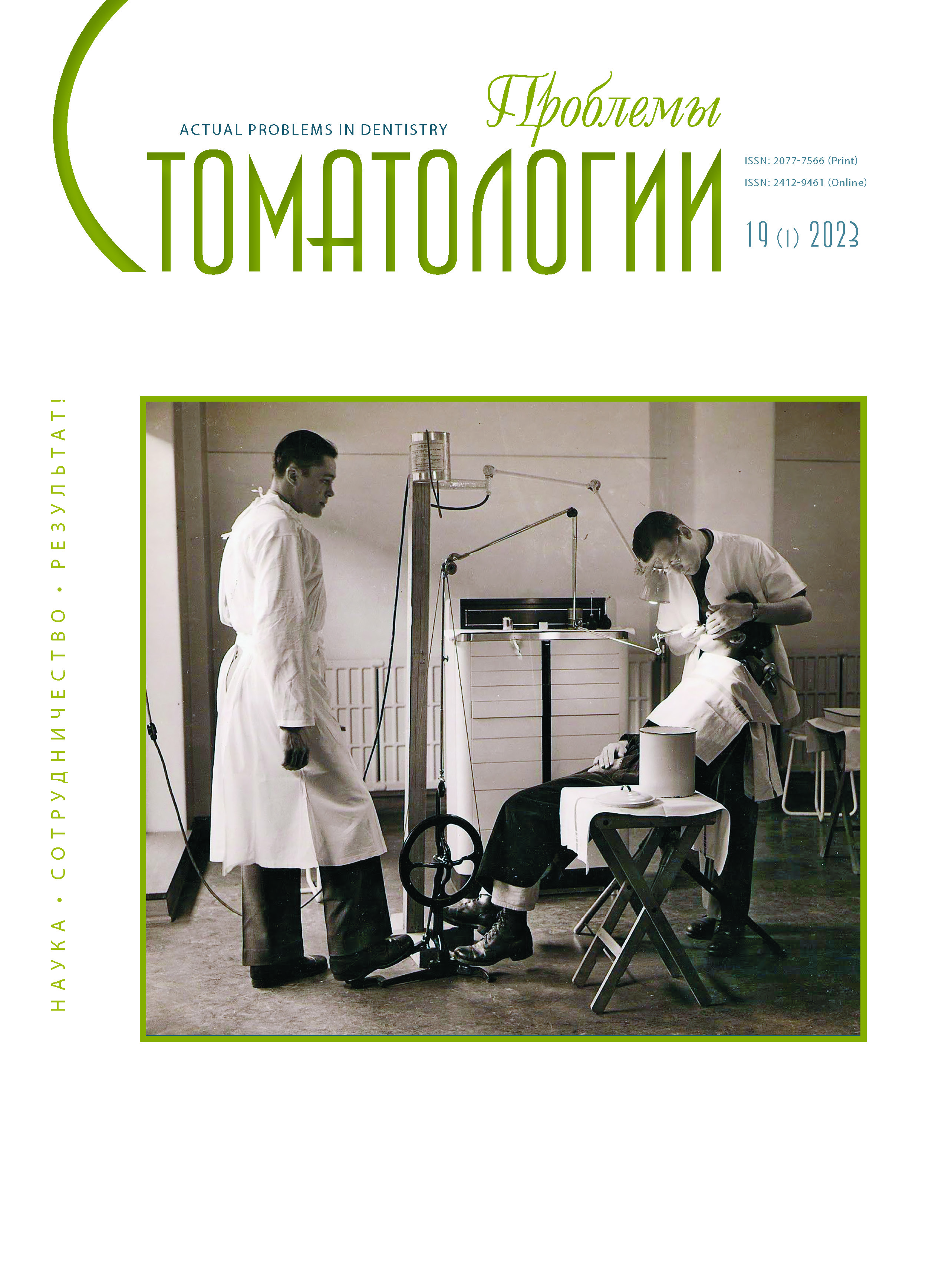Stavropol, Stavropol, Russian Federation
Stavropol, Russian Federation
Stavropol, Russian Federation
Stavropol, Stavropol, Russian Federation
Stavropol, Stavropol, Russian Federation
CSCSTI 76.29
Nowadays the problem of optimal restorative prosthetics on dental implants is of paramount importance for solving a number of clinically difficult cases and extends beyond the alternative treatment at the complete and partial adentia both on the upper and lower jaws. An essential factor here is understanding of the biomechanical behaviour of the implant-abutment interface, because an optimal implant-abutment interface simulates the biophysical behaviour of natural teeth and ensures the long-term function of the prosthetic restoration. The optimal method for assessing the implant-abutment junction is the static tensile strength method. The limit is determined by performing a single loading of the dental implant in the implant-abutment area. The aim of the study was to assess the implant-abutment deformation of demountable and non-demountable structures of the 4*10 cylindrical and cone-shaped dental implants with determination of their static strength limit. Materials and methods. Two brands of dental implants have been chosen as the objects of research – cylindrical implant LIKO M 4x10 and cone-shaped implant LIKO M DG 4x10. A subject of the research is the ultimate strength of the implant-abutment unit of demountable and non-dismountable abutment design. Results. Static loading tests with estimation of the deformation limit of the implant-abutment unit were carried out along with the comparative estimation of the strength of demountable and non-demountable abutment constructions of dental implants of various shapes. Conclusion. The carried out comparative analysis of the static strength makes it possible to optimise the process of orthopaedic treatment on dental implants taking into account the maximal limits of the loaded structures and to carry out the equilibrium load distribution.
dental implant, abutment, static testing, conical dental implant, cylindrical dental implant, implant-abutment unit, static test
1. GOST R ISO 14801-2012. Stomatologiya. Implantaty. Ustalostnye ispytaniya dlya vnutrikostnyh stomatologicheskih implantatov. - M. : FGUP «STANDART-INFORM», 2012. - 12 s.
2. Muraev, A. A. Innovacionnaya rossiyskaya sistema dental'nyh implantatov: razrabotka, laboratornye issledovaniya i klinicheskoe vnedrenie: special'nost' 14.01.14 "Stomatologiya" : dissertaciya na soiskanie uchenoy stepeni doktora medicinskih nauk / Muraev Aleksandr Aleksandrovich. - Moskva, 2019. - 294 s.
3. Cygankov Aleksey Igorevich. "Modelirovanie ustalostnogo razrusheniya vnutrikostnyh stomatologicheskih implantatov" Modeli, sistemy, seti v ekonomike, tehnike, prirode i obschestve, no. 3 (7), 2013, pp. 188-192.
4. Bayata F., Yildiz C. The effects of design parameters on mechanical failure of Ti-6Al-4V implants using finite element analysis. Eng. Fail. Anal. 2020;110:104445. doi:https://doi.org/10.1016/j.engfailanal.2020.104445.
5. Duan Y., Griggs J.A. Effect of loading frequency on cyclic fatigue lifetime of a standard-diameter implant with an internal abutment connection. Dent. Mater. 2018;6:1711-1716. doi:https://doi.org/10.1016/j.dental.2018.09.001.
6. John W.N. Titanium Alloys for Dental Implants: A Review. Prosthesis. 2020;2:100-116.
7. Leon P.P., Bartolome J.F., Lombardia C., Pradies G. Mechanical fatigue behavior of different lengths screw-retained restorations connected to two designs prosthetic connection level. J. Oral Rehabil. 2019;46:747-755.
8. Perriard J., Wiskott W.A., Mellal A., Scherrer S.S., Belser U.C. Fatigue resistance of ITI implant-abutment connectors-a comparison of the standard cone with a novel internally keyed design. Clin. Oral Implants Res. 2002;13:542-549. doi:https://doi.org/10.1034/j.1600-0501.2002.130515.x.
9. Qian L., Todo M., Koyano K. Effects of implant diameter, insertion depth, and loading angle on stress/strain fields in implant/jawbone systems. Int. J. Oral Maxillofac. Implants. 2009;24:877-886
10. Sun, F., Lv, L. T., Cheng, W., Zhang, J. L., Ba, D. C., Song, G. Q., & Lin, Z. (2021). Effect of Loading Angles and Implant Lengths on the Static and Fatigue Fractures of Dental Implants. Materials (Basel, Switzerland), 14(19), 5542. https://doi.org/10.3390/ma14195542
11. Wang K., Geng J., Jones D., Wei X. Comparison of the fracture resistance of dental implants with different abutment taper angles. Mater. Sci. Eng. C. 2016;63:164-171. doi:https://doi.org/10.1016/j.msec.2016.02.015



















